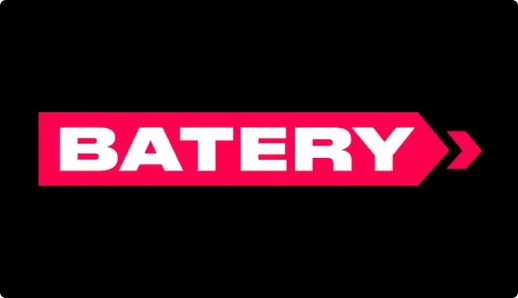Cement and Types of Cement

Table of Contents
- 1 What is Cement?
-
2 Types of Cement
- 2.1 Hydraulic Cement
- 2.2 Non-Hydraulic Cement
- 2.3 Ordinary Portland Cement
- 2.4 White Cement
- 2.5 Rapid Hardening Cement
- 2.6 Quick Setting Cement
- 2.7 Color Cement
- 2.8 Portland Pozzolana Cement
- 2.9 Low Heat Cement
- 2.10 Sulphates Resisting Cement
- 2.11 Hydrographic Cement
- 2.12 Waterproofing Portland Cement
- 3 Share this:
What is Cement?
Cement is a cementitious material mixed with inert aggregate because of adhesive and cohesive properties. It is used in the construction of roads, buildings, bridges, and dams, etc. It is first discovered in England in the year 1824 AD by Joseph Aspedin. In history, first ordinary Portland cement is patented. It is grayish in color. Nowadays, commonly ordinary Portland cement is using in general life because of its desirable properties.
Cement is made up of limestone which produces CaO and clay. It furnishes SiO2 and Al2O3. These are blended, clinkers in a kiln after that, it is cooled. At last, gypsum is added and the mixture is ground to the finesse. In Asia, the material is shipped in bags containing 50 Kg of cement. While in the united states of America, the net weight of cement in a bag is 42.6 Kg. The weight of cement in bags is different in different countries.
Portland cement, the most common type of cement is used around the world because of its basic ingredients. When Portland cement is firstly patented by joseph Aspedin he gives it the name “Portland cement” because its color is similar to the Portland stone quarried on the Isle of Portland, Dorset England. This cement was not just like modern cement but it was the first step in the development of cement. Its manufacturing cost was high because of the requirement of high kiln temperature and therefore it takes more fuel.
Ordinary Portland cement is used more than 90% percent in construction. Cement mixed with aggregate to form concrete generally takes one to two weeks to gain sufficient strength. So that the shuttering of beam and slabs can be removed and can bear a reasonable load. This concrete gain desired strength after 28 days. Nowadays high early strength cement is developed within seven to fourteen (7-14) days. They achieve their strength using ordinary Portland cement at 28 days but they are costlier than ordinary Portland cement. The word “cement” is traced by the roman term “opus caementicium” it was used to describe masonry modern concrete. It was made from crushed rock mix with lime as a binder.
Without water, cement is not able to mix with aggregate to form concrete. Generally, Portland cement is expired within three months and can be early expired when placed in moisture place. When water is added with cement it initial setting time is half-hour means 30 min and final setting time is 8 hours. Cement used in concrete in a different ratio for high strength concrete the cement will be used more in ratio. For the normal strength of concrete, the average cement is used. Generally, concrete used in normal construction are:
M5 1 : 5 : 10
M7.5 1 : 4 : 8
M10 1 : 3 : 6
M15 1 : 2 : 4
M20 1 : 1.5 : 3
“M” means mixing of the concrete, the number means its strength. For example, M5 means the concrete will bear the 5 N/mm2 load safely.
Read more about: The Uses of Cement
Types of Cement
There are two main types of cement
- Hydraulic Cement
- Non-Hydraulic Cement
Hydraulic Cement
The cement which can be set/bind in wet condition or with water and further protects the hardened material from chemical attack. This type of cement was discovered by ancient Romans who used volcanic ash with added lime.
Non-Hydraulic Cement
The cement which is not set underwater or wet condition is called Non-Hydraulic Cement. This type of cement does not harden when it is in contact with water. It requires carbon dioxide (CO2) from its surroundings to dry off & harden. It reacts with CO2 in the air & when it dries & hardens, it is resistive against the chemical attack.
Generally, there are many types of cement which are given below:
Ordinary Portland Cement
It is the most common type of cement. It is used very extensively above 90% in construction. Ordinary Portland cement offers good resistive against shrinkage and cracking. It is not very good against sulphates in soil. The name Ordinary Portland Cement is given by Joseph Aspdin because of its color which is grayish similar to the Portland stone quarried on the isle of Portland Dorset England. There are three main types of ordinary Portland cement which are given below:
- Grade 33 OPC
- Grade 43 OPC
- Grade 53 OPC
The grade shows the strength of cement in N/mm2 at 28 days. For example, Grade 53 OPC means 53 N/mm2 compressive strength.
White Cement
The color of this cement is white because of the lowering of the iron oxide in its composition. This cement is same as ordinary Portland cement just different by its color. White cement is used for decoration, ornamental and architectural work while also used for the joining marble and tile joints. The strength and durability of white cement is the same as ordinary Portland cement. White cement is also used in terrazzo construction to mix it with ordinary Portland cement.
Rapid Hardening Cement
Rapid hardening cement achieves strength very quickly that’s why its called rapid hardening. The strength of rapid hardening cement gain in three to four days are similar to one week of ordinary Portland cement. This cement is used for fast construction where the formwork is removed very quickly. Itt is also used in prefabricated concrete construction, dam, building, road works, etc. In this cement, the amount of C3S content is high, and also lime is increased to hardened it quickly.
Quick Setting Cement
This type of cement gains strength quickly. It is used in wet location or running water and also used where time is short in construction. There is a little bit difference between quick setting time cement and rapid hardening cement. The rate of gain of strength is same as ordinary Portland cement. In both types of cement i.e. quick setting cement and rapid hardening cement the shuttering is removed quickly.
Color Cement
This cement is produced by mixing different varieties of pigments in ordinary Portland cement. Color cement is used in decorative works or in floors. color cement is also used in marble and tile joints.
Portland Pozzolana Cement
Portland pozzolana cement is produced by adding pozzolanic clinker with Portland cement. It is highly resistive against chemical attack on concrete compared with ordinary Portland cement. This cement is widely used in construction such as dams, marine structure, bridges, underwater, piles construction, sewage and mass concrete, etc.
Low Heat Cement
Low heat cement is used in hot places where hydration is more. In this cement, the C2S is used more in ratio and a small quantity of tricalcium aluminate which makes the concrete low in hydration. Low heat cement is good for preventing crack and shrinkage in concrete.
Sulphates Resisting Cement
The name of this type of cement indicates that this cement is used for the prevention of risks caused by sulphates. In this cement, the C3A and C4AF are reduced in proportion. Sulphate Resisting cement is used in locations where sulphate attacks are very severe.
Hydrographic Cement
This cement is made from finely ground portland cement with a hydrophobic or water repellent agent. It repels water which is why it is used in locations where there is abundancy in water. It can harden very easily in such locations. It is also known as hydrophobic cement. it is used in water structure like dams, piles in water, water retaining structure, spillway, etc.
Waterproofing Portland Cement
The waterproofing Portland cement is used where water is more in quantity and have a tendency to damage/fail the structure. Therefore, waterproofing cement must be used to safeguard the structure against water. Waterproofing cement is manufactured by adding a small amount of metal sereates in an ordinary Portland cement during grinding. The waterproofing cement is widely used in foundation, water tanks, dams, buildings and also water retaining structures.
You may Also read:
- Uses of Cement
- What Is Aggregate? Its Properties & Uses
- Difference Between Cement, Mortar & Concrete
 All About Engineering A Very useful blog about Engineering
All About Engineering A Very useful blog about Engineering






